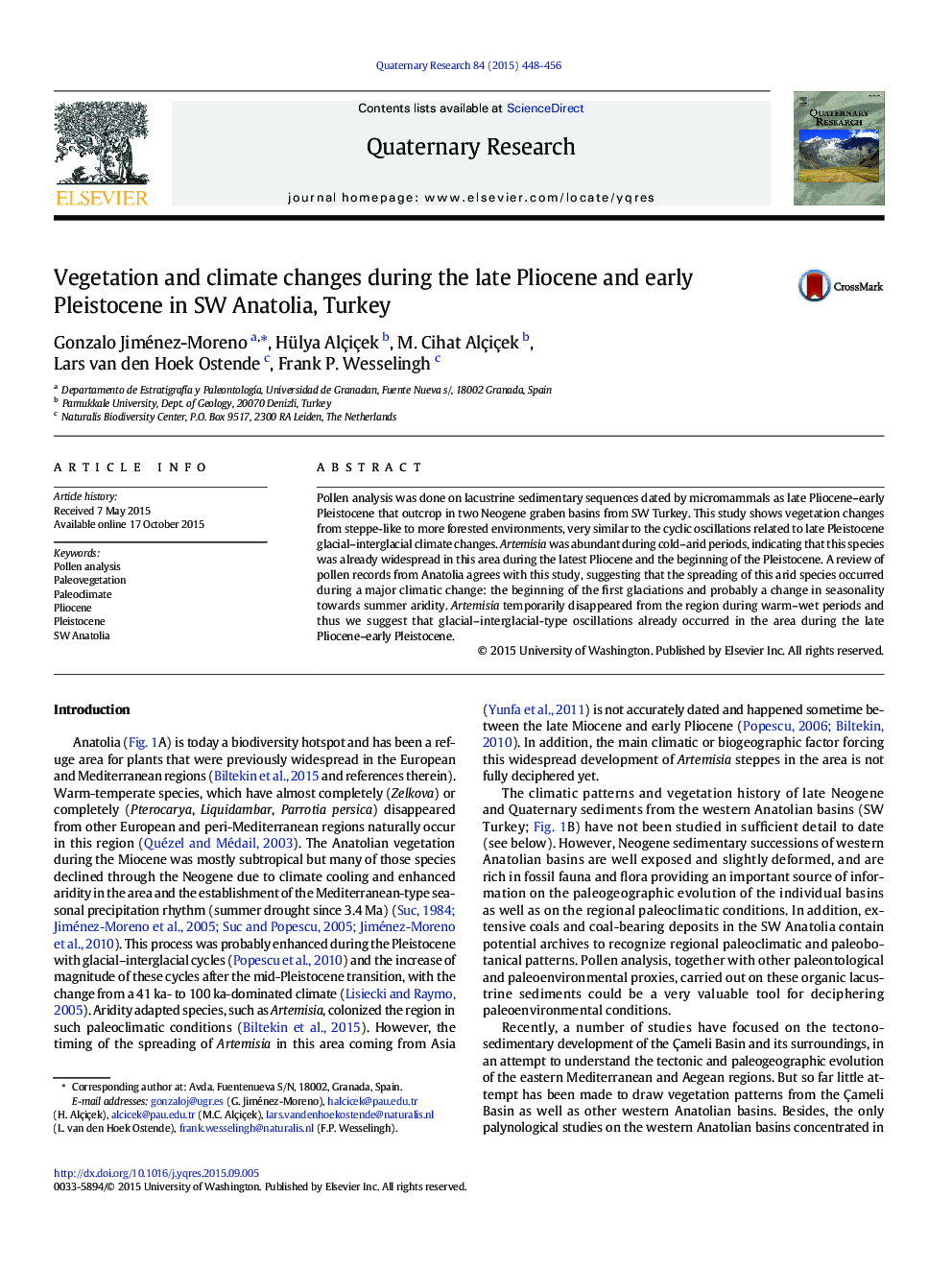| Article ID | Journal | Published Year | Pages | File Type |
|---|---|---|---|---|
| 1045050 | Quaternary Research | 2015 | 9 Pages |
Pollen analysis was done on lacustrine sedimentary sequences dated by micromammals as late Pliocene–early Pleistocene that outcrop in two Neogene graben basins from SW Turkey. This study shows vegetation changes from steppe-like to more forested environments, very similar to the cyclic oscillations related to late Pleistocene glacial–interglacial climate changes. Artemisia was abundant during cold–arid periods, indicating that this species was already widespread in this area during the latest Pliocene and the beginning of the Pleistocene. A review of pollen records from Anatolia agrees with this study, suggesting that the spreading of this arid species occurred during a major climatic change: the beginning of the first glaciations and probably a change in seasonality towards summer aridity. Artemisia temporarily disappeared from the region during warm–wet periods and thus we suggest that glacial–interglacial-type oscillations already occurred in the area during the late Pliocene–early Pleistocene.
